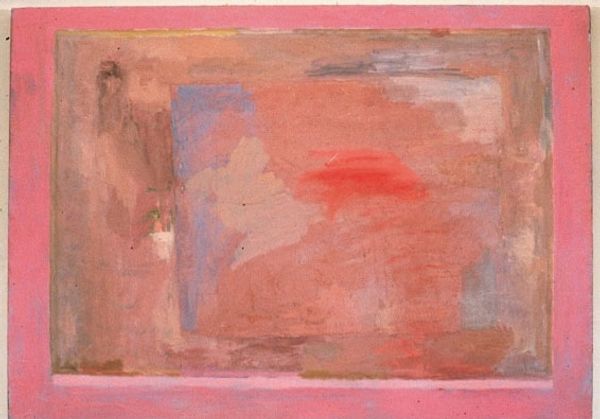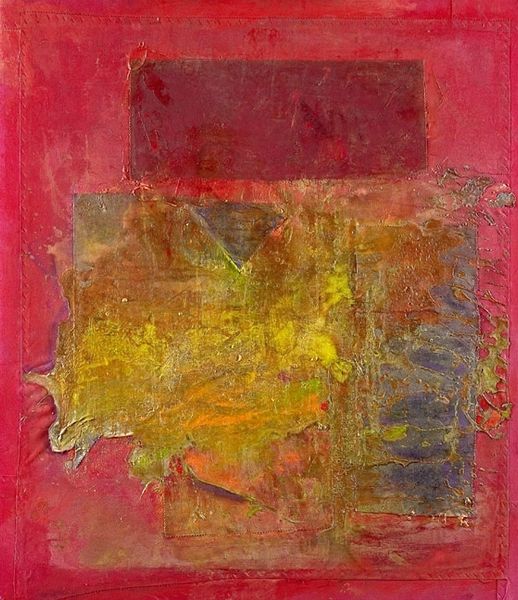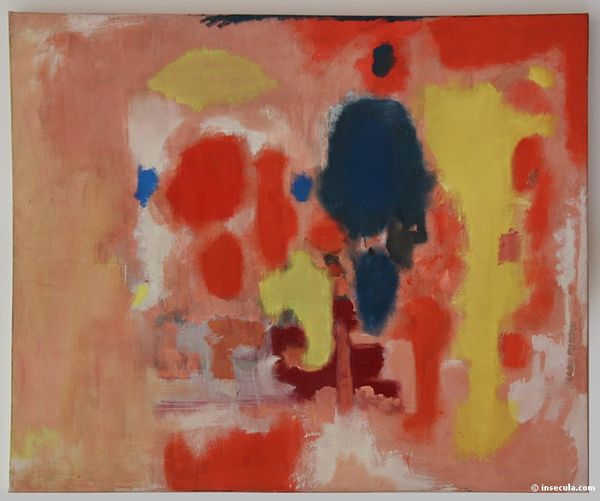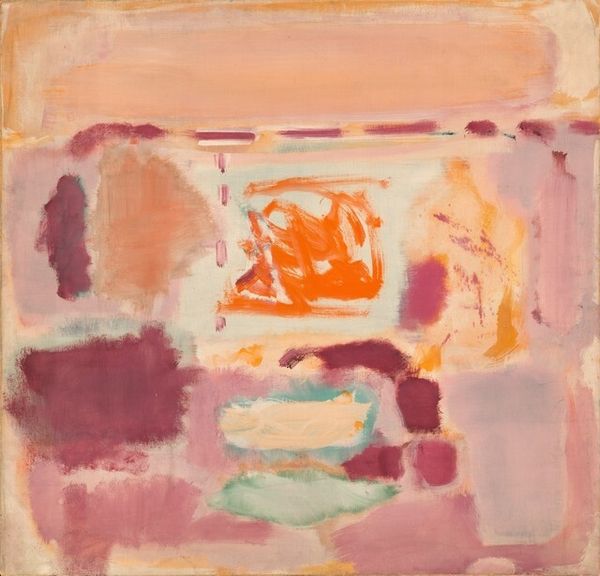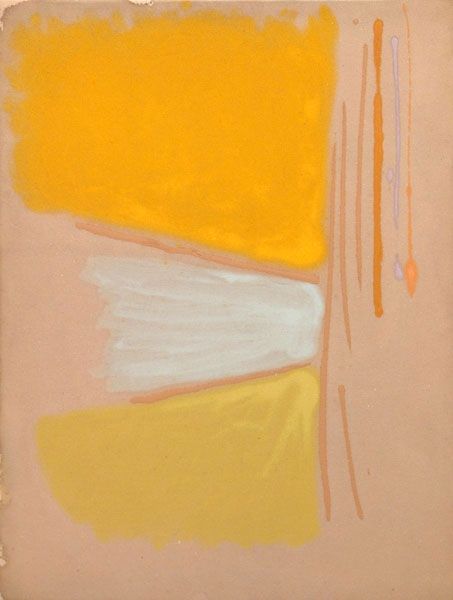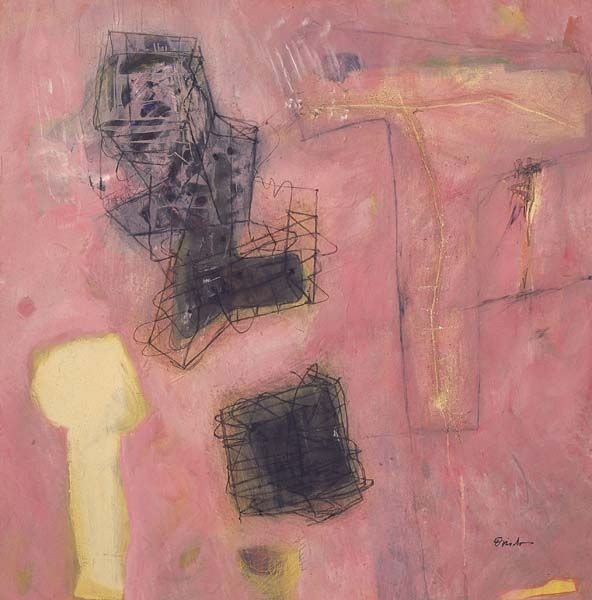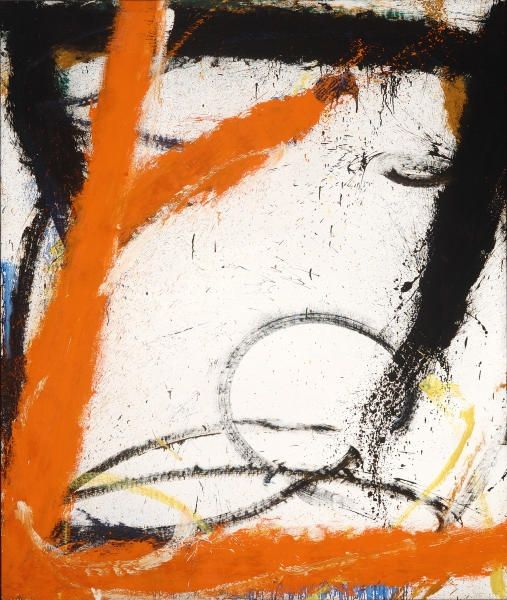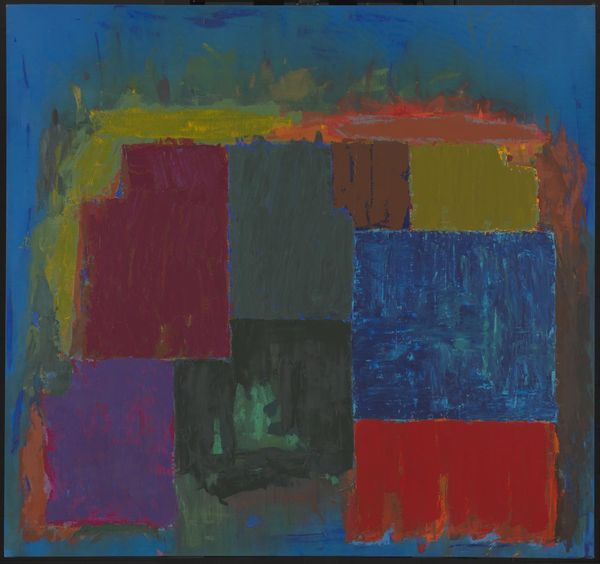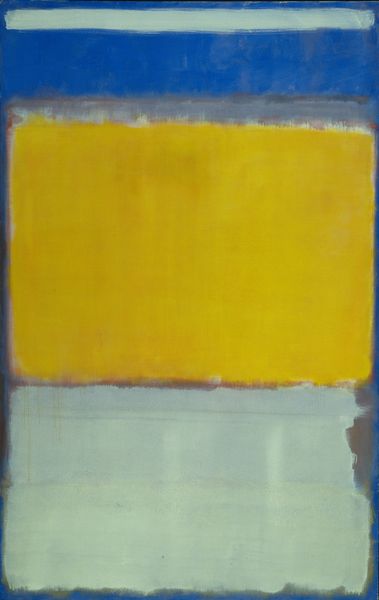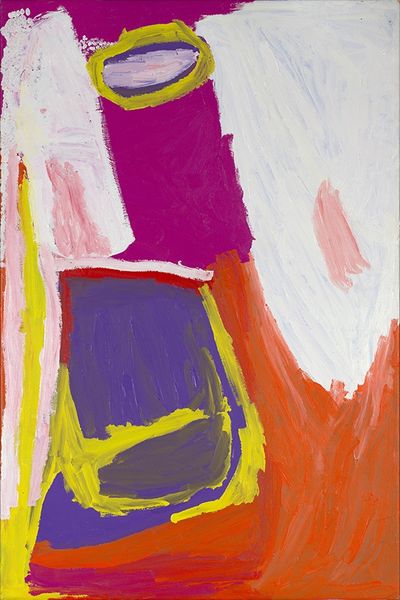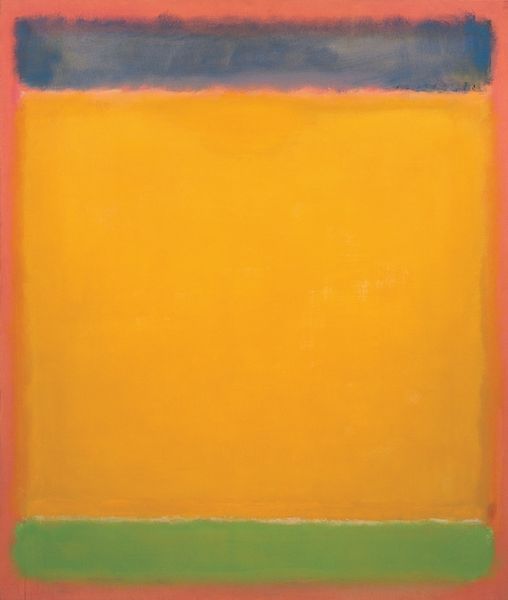
oil-paint
#
abstract-expressionism
#
abstract expressionism
#
abstract painting
#
oil-paint
#
landscape
#
possibly oil pastel
#
oil painting
#
abstraction
#
modernism
#
watercolor
Copyright: Mark Rothko,Fair Use
Curator: Welcome. Before us hangs Mark Rothko’s "No. 9," created in 1947 using oil paint. Editor: Immediately, I’m struck by its tension. It evokes a muted sunset viewed through a hazy window, yet with an unsettling undercurrent of darker tones. Curator: Indeed. This work sits at a pivotal point in Rothko’s development, bridging his earlier surrealist-influenced pieces and his later, more iconic color field paintings. You see hints of biomorphic forms here, remnants of the influence of artists like Miró. Editor: There's almost a struggle between figuration and pure abstraction. The central dark shape feels weighty, anchored by the softer, glowing fields around it. It certainly embodies a particular cultural moment; 1947 was hardly carefree and that unease certainly plays out here. Curator: Precisely. While he avoided explicit symbolism, Rothko sought to convey profound, universal emotions through color and form alone. Note how the edges of each color block are blurred, encouraging the colors to interact, to almost breathe together. The lack of distinct lines adds to the ethereal quality. It's almost about the paint itself rather than an intentional pictorial gesture. Editor: This echoes the prevalent desire to reject traditions following WWII. How might we frame its place within that drive to establish new artistic idioms and spaces after the old systems and ideals seemed irrevocably tarnished? Curator: Rothko's rejection of traditional composition certainly aligned with the zeitgeist of post-war America, but what separates his canvases is that singular devotion to emotional depth and monumentality using surprisingly rudimentary formal means. Editor: Ultimately, Rothko presents a world that appears simple, yet delivers something that vibrates on an utterly deeper plane. A testament to the power of raw sensation. Curator: Indeed, and thank you for your astute insights into how historical context profoundly affected artistic form. I appreciate you bringing that level of depth.
Comments
No comments
Be the first to comment and join the conversation on the ultimate creative platform.
